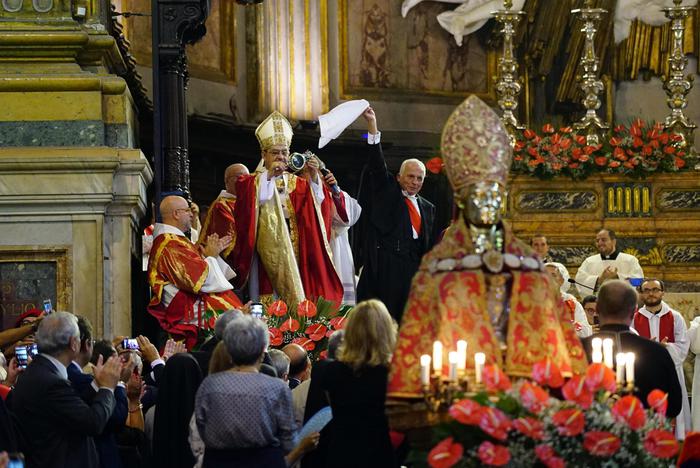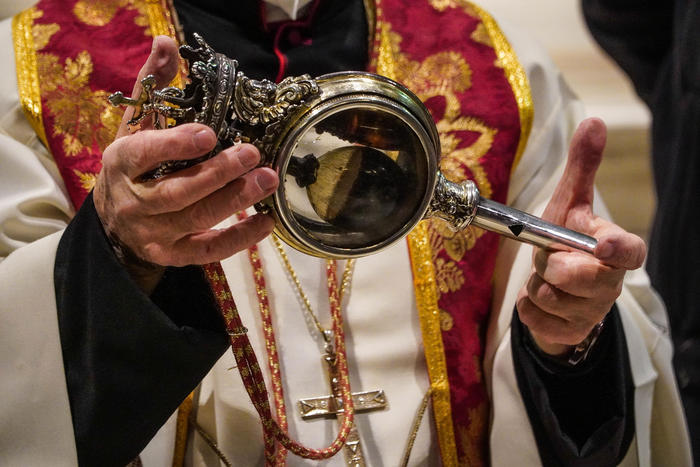People also travel to the southern Italian city’s cathedral to witness the miracle on December 16 and on the Saturday before the first Sunday of May.
But the most celebrated occasion falls on September 19, which marks the saint’s feast day and an annual public holiday in Naples.
It is believed that San Gennaro was born in Benevento, northeast of Naples.
He became the local priest of his parish at the age of 15, and was appointed as Bishop of Naples five years later.
He was martyred in AD 305 during the Great Persecution of the Christians under Emperor Diocletian.
It is believed he was imprisoned while travelling to visit other captive Christians, then beaten and tortured before being beheaded in front of a public audience near Pozzuoli.
Upon his murder, San Gennaro’s body and head were wrapped up and transported back to Naples, while women collected his blood with a cloth; the blood was later placed into two glass phials.
It is said that as early as eight years after the saint’s death, the blood began to liquefy on certain occasions.
September 19 marks the most important day for the city of Naples, where locals flock to the cathedral to witness the saint’s blood liquefy.
A lively procession takes over the streets of Naples’ historical centre, Spaccanapoli, as the silver bust of San Gennaro is carried to the cathedral.

Faithfuls celebrate the blood miracle of San Gennaro in the cathedral of Naples
The saint’s silver bust is then placed by the altar, and in an age-old ritual, the “zie” of San Gennaro (women seated in the first row of the church) begin repeating a series of prayers to invoke the miracle.
It could take minutes, or it could take hours, but devout believers wait in anticipation and pray fervently for the blood in the phials to begin bubbling and turn into liquid in the hands of the resident cardinal.
If the blood liquefies, the cardinal announces: “The miracle has happened.”
This signals that the city is safe and days of festivities begin.
If the blood fails to liquefy, a different story unfolds.
According to traditional beliefs, if the miracle doesn’t occur, as has happened several times, it is a bad omen for the city.
For example, the miracle of San Gennaro failed to occur in 1980, and was followed by an earthquake which claimed the lives of 2000 people.
Of course, this miracle is not without its sceptics, and many scientists and authorities have tried to disprove the legend of San Gennaro.
True or not, the miracle of San Gennaro is a fundamental part of Neapolitan culture and carries great social and religious significance in the southern city and across the whole nation.
The miracle is even celebrated among Italian communities in other corners of the world, and is a highlight of the year for Little Italy in New York City.












